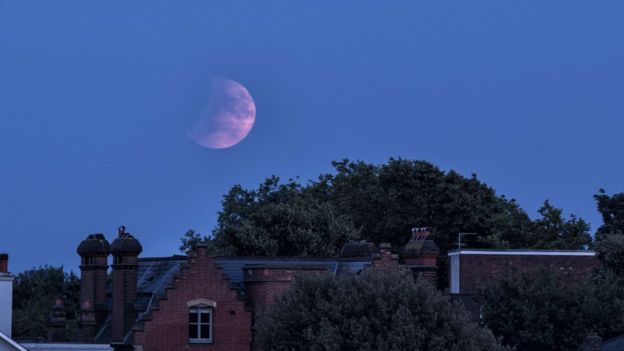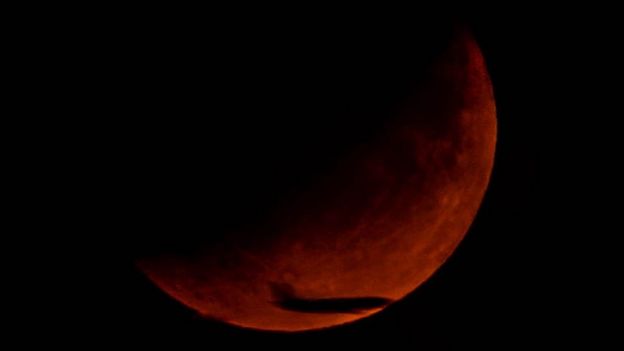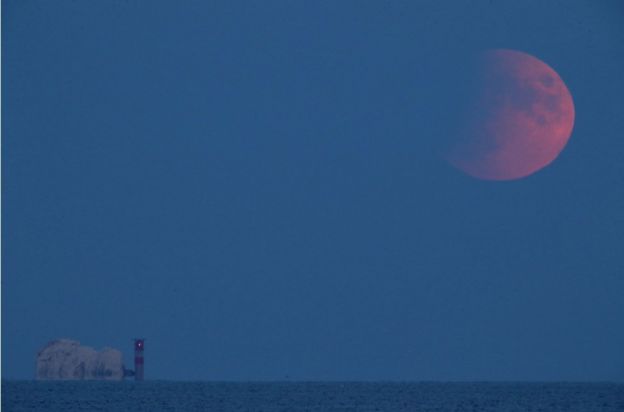Skywatchers across the UK have witnessed a partial lunar eclipse, 50 years to the day since the US mission to put men on the Moon lifted off.
The surface of Earth’s satellite appeared red or dark grey at the height of the eclipse at about 22:30 BST.
Lunar eclipses occur when the Earth crosses between the Sun and Moon – casting a shadow on the lunar surface.
The Apollo 11 mission carrying Neil Armstrong, Buzz Aldrin and Michael Collins blasted off on 16 July 1969.
Four days later Armstrong became the first man to step on to the Moon’s surface.
The event was visible across Europe and was also expected to be seen from Africa, much of Asia, the eastern part of South America, and western Australia.
Lunar eclipses can only occur on the night of a full moon.
The next partial lunar eclipse is not expected until 19 November 2021.
During a partial eclipse, some – but not all – of the Moon passes through the darkest area of shadow behind the Earth, the central region called the umbra.
 Image:MIKE MEYNELL
Image:MIKE MEYNELL Image:MATT MORRIS
Image:MATT MORRIS Image:PA MEDIA
Image:PA MEDIA


